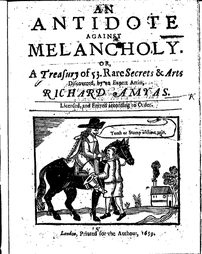 Rare hosting tips! (Wing A3032A ) Hosting a dinner party? Why not try these fun seventeenth-century tips... Richard Amyas has 53 in his treasury, I'll give you ten.. First, you'll want to make your house ready for your guests: 1. Make Rats forsake a House: Burn Assafettida in the Roof of the House often, and the Rats will forsake and fly from the House in a short time. (Assafettida, also known as "devil's dung, tastes like leeks. Apparently. Someone can let me know). 2. Make a Light that will continue always: Take the Liquor of Glow-worms, mix it with a quarter of the quantity of quick|silver, and put it into a Vi[...]l, hang it up in the Room, and you may see all night long by the light. (Nifty, if you've got lots of glow-worms on hand!) 3. Catch Fleas in a trap: Take a piece of Tin made like a dripping-pan, the length and bigness of a small trencher, then put over it 5 or 6 small wires made fast to the Tin, bowed like the hoops over a waggon, then fill the Tin with Venice Turpentine mixt with a little honey, then put this Trap in the Bed in the morning when you rise, between the sheets, and there you shall find the Fleas stick in the Turpentine, as thick as Wasps in a Honey-pot. (Alrightee then!) Why not try these parlour--ahem, withdrawing room--tricks? Wow and amaze your guests!!! 4. Write your name on a piece of Paper, and burn that piece of Paper & the same letters to appear on the back of your hand. (Got that?) To do this, first write the Name on a small piece of Paper; then privately write the same Letters on the back of your hand, with a Pen-ful of your own Urine, which none can perceive: then burn that Paper· and as it is almost burnt, clap it upon the back of your hand, and rub it, & there will strangely appear the same letters on the back of your hand, with admiration to the Beholders. (Ah, the secret hidden urine trick. Classic!) 5. Make Pease leap out of the pot as if they were mad. Put a Quill or two of Quick-Silver into the pot, and all the Pease shall leap out of the pot. (Well, now that just sounds fun!) (They're seem to be a number of related tricks like this: To make a blown Bladder dance and skip about the room; to make a penny-loaf tumble, and skip up and down on it self; to make a ring dance on a table of it self...Basically, just add quicksilver to anything, and the object will look mad!!! A handy substance, to be sure!) 6. Make an Apple to move on a Table of it self: A fine secret. (and guess what, no quick silver!) Cut an Apple in the midst, and in the one half make a round hole, putting therein a black Beetle, and so lay the half on the table, and it will move about the table. 7. Make a Chamber to appear full of Addors and Snakes. (Now THAT'S got to be a parlor trick you don't see every day!) Kill a dozen Adders and Snakes, and take the oyl of them, and mix it with wax, and make a Candle, light it in a Chamber where rushes are, and the rushes will appear to be Adders and Snakes about the Room. (Somehow I feel there's a corollary woodcut somewhere--how to trick your friends into being bitten by a poisonous snake by letting them think they are preparing a neat trick themselves...) And at the end of the night, if your guests aren't bidding timely farewells... 8. Fright the people of a house, and make them believe there are Spirits walking in a Room. To do this, take a black or gray Cat; then take 4. Walnut-shells, put Pitch in them, beat it, and put on every foot one; and tye a certain piece of rotten wood, which you shall find to shine in a dark night about the Cats Neck, and put her in a boarded Room, she will so trample about the Room, to the amazement of them that know not what you have done; and the moist piece of rotten wood (if they peep in at the key|hole, or chink of the door) it will seem to be like fire. And if the scare-the-bejezus-out-of-your-guests doesn't work... 9. Clear a Room of drunken or rude company. Take a Chafingdish of clear Charcoals, or live Wood-coals; throw Giney Pepper on it, and put it under the table, and they will both cough, sneez, fart, and spew, if they have drunk hard. (What can I say? What can I say?) And to make sure everyone thinks your party was a success (even if it wasn't)... 10. Make a Tell-tale or Gossip, to trump about: the house an hour or two shooting off the great Guns. Take the Liver of a Hare dryed in an Oven, and made into fine Powder; mix it with the Eggs of yellow Ants, or Pismires, put it into the Parties broth, or into Beer with Sugar and Nutmeg to discolour it: then an hour after employ the party to draw off a straight pair of Boots, or the like Exercise, and he'l make cracking off about bravely. (Okay, I have to admit, I'm not sure I understand this one. I think this mixture will make people think they've been to the coolest party ever...) And just think--Amyas had 43 more of these gems! Who wouldn't want to party 1659-style?
11 Comments
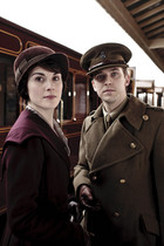 Entrenched in intrigue I'm always fascinated by the way words seep into the English language. In honor of my Downton Abbey withdrawal and Florence Green (the last World War I veteran who passed away a few weeks ago at 111) AND because I recently wrapped up a class discussion on the Great War, I thought I'd say something about how WWI introduced some rather evocative--if heartbreaking--language into our vocabulary. 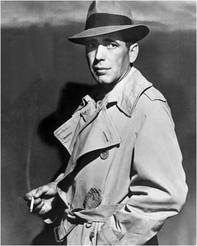 fashion from the trenches In 1914, Burberry was commissioned to create a new type of coat, the trench coat, that would allow British officers to stay both stylish and comfortable during the war (not sure how that worked out...) After the war, the coat became extremely popular, made even more so when it made its way to Hollywood. (Nowadays, the trench coat is so pervasive, I always wonder if anyone thinks twice about its origins.) Lots of phrases are still around, too, mostly from the terrible conditions soldiers had to face. "In a funk" (feeling dejected) may have referred to the (funky/smelly) holes in the trench walls where soldiers could stand to keep dry."Lousy" referred first to lice infested clothes, later to everything crummy. "Dig oneself in" (stick to one's ground, being stubborn) came from entrenching. To be "Up against the wall" (in a difficult spot) probably came from deserters' placed in front of a firing squad. (All a bit stomach-churning, really). Shell-shock--a kind of obvious one. And sadly, "basket case," a term for someone who's a bit screwed up, arose from the practice of transporting severely injured men in baskets. 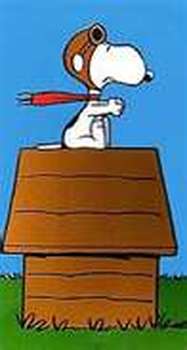 Snoopy stayed out of the trenches Some, of course, came from the early aviation: "In a tail-spin," "joystick," "nose dive" --all essentially descriptive. "Hush-Hush" referred to top secret operations. And a "dud" (a failure) comes from an unexploded mine or shell. And of course, the very best. Snoopy, the World War I flying "Ace." An excellent pilot, he was the high card to play against the dreaded Red Baron. (Although, now, when I see Snoopy reenact the prolonged suffering of a lonely airman stationed in France, I find it quite disturbing.) What other vestiges from the Great War do we still speak and hear daily? You tell me! 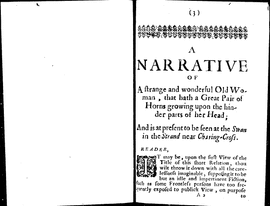 Early English Books Wing / B4610 Is bookselling today so very different than it was a few hundred years ago? Certainly, some similarities can be found. For example, an author could write a piece and see it published and distributed the very next day if he or she chose. Some printers would pay the authors for particularly compelling (read: sellable!) chapbooks, ballads, broadsides and woodcuts. Authors might also have paid a printer to see their work published. However, there was one notable difference: Early modern booksellers and chapmen might chant or 'sing' their wares, in order to garner reader interest and directly engage their audiences. (Unlike today where authors read their own books. So fun, though, to think of modern publishing executives standing on street corners, singing their clients' books!). Authors often wrote their pennypieces, knowing they would be read out loud. So, take a typical seventeenth-century woodcut. A Brief Narrative of a Strange and Wonderful Old Woman that hath a Pair of Horns growing upon her Head (London, 1676). Having identified a busy intersection near a market, church or tavern, the bookseller would call out to passers-by: "You that love Wonders to behold Here you may of a Wonder read. The strangest that was ever seen or told, A Woman with Horns upon her Head." Horns upon her head? Surely a crowd would gather. The bookseller would continue, acknowledging that the tale about to be told was completely preposterous. "It may be, upon the first View of the Title of this short Relation, thou wilt throw it down with all the carelessness imaginable, supposing it to be but an idle and impertinent Fiction..." But the author's stated goal was to make the incredible seem credible, and the bookseller needed to convey that in order to sell the piece. Evidence, eye-witness testimony, whatever worked: "Take but a Walk to the Swan in the Strand, near Charing-Cross, and there thou mayest satisfie thy Curiosity, and be able to tell the World whether this following Narration be truth or invention." And a few more specifics intended to help the reader/listener connect and visualize the story: The 76 year old woman had been born and bred in "the parish of Shotwick in Cheshire." Married for 35 years before being widowed, she had lived a "spotless and unblameable life," helping her neighbors in her role as a midwife. The groundwork laid, now the bookseller might offer some more sensational details. How did the woman's horns first emerge? "This strange and stupendious[sic] Effect began first from a Soreness in that place where now the Horns grow, which (as 'tis thought) was occasioned by wearing a straight Hat." Would the audience believe that? While some authors might have portrayed this hapless woman as a monster, this one took a more sympathetic view. Good booksellers might have changed their tone here, to cull the sympathies of their listeners.... "This Soreness continued Twenty Years, in which time it miserably afflicted this good Woman, and ripened gradually unto a Wenn near the bigness of a large Hen Egg... After which time it was, by a strange operation of Nature, changed into Horns, which are in shew and substance much like a Ramms Horns, solid and wrinckled, but sadly grieving the Old Woman, especially upon the change of Weather." And yet the poor woman could not rid herself of the horns. You can almost imagine the audience leaning in, taking in each of the bookseller's words... "She hath cast her Horns three times already; The first time was but a single Horn, which grew long, but as slender as an Oaten straw: The second was thicker than the former: The two first Mr. Hewson Minister of Shotwick (to whose Wife this Rarity was first discovered) ob|tained of the Old Woman his Parishioner: They kept not an equal distance of time in falling off, some at three, some at four, and another at four Years and a halfs Growth. The third time grew two Horns, both which were beat off by a Fall backward." And if the pennies weren't being loosed from tightly clasped purses, the bookseller might offer one more fantastic detail about what happened to the horns... "One of them an English Lord obtained, and (as is reported) presented it to the French King for the greatest Rarity in Nature, and received with no less Admiration." (Yes, it seems the poor woman's horns may have been given to King Louis XIV of France! Surely, owning a woodcut detailing the story was the next best thing to seeing the horns with one's own eyes?) The early modern townspeople and merchants and fishwives--and anyone else who enjoyed the strange account--might purchase the piece to share with family and neighbors later. After passing it around, and thoroughly re-reading the story, the buyers might even paste the pennypiece somewhere on their walls, a cheap way to decorate their homes. Hmmm....maybe we should go back to pasting strange and wonderful stories on our walls. What do you think? 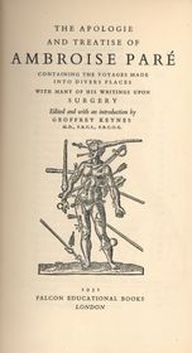 17th c. detective of poisons A few weeks ago, I wrote about the first female literary sleuths, and since then I've since been wondering about the real first "detectives." I don't mean just any investigators of criminal activity, for surely, those have existed since time immemorial. But I was curious about when the term "detective" emerged as a recognizable title and/or occupation. The word does appear in the Early English Books Online as early as 1634. However, the word detective was not used as a noun, but rather as a verb, referring to the process of detecting. Specifically, the "famous chirugion [surgeon] Ambrose Parey" detective the effects of deadly poisons on the human body. Turning to my trusty Oxford Etymological Dictionary, I found that as a noun, "detective" was not used before before 1843. According to the Chambers Edinburgh Journal, "Intelligent men have been recently selected to form a body called the ‘detective police’‥at times the detective policeman attires himself in the dress of ordinary individuals." (12: 54). The word was later referenced in Willis' discussion of modern thief-taking in 1850: "To each division of the Force is attached two officers, who are denominated ‘detectives’" (C. Dickens, Househ. Words 13 July 368/1). Prior to 1850, those conducting investigations might have been called a searcher (1382), intracer (?a1475), inquisitor (?1504), inseer (1532), theif taker (1535) (my favorite, and the one I use!), peruser (1549) investigator (1552), tracer (1552), scrutineer (1557), examiner (1561), revisitor (1594), researcher (1615), examinant (1620), indagator (1620) (that's a great one!), ferret (1629), (another great one!), pryer (1674A), probator (1691), disquisitor (1766), grubber (1776), prober (1777), plant (1812), grubbler (1813), and plain clothes (1822). After 1850, additional colorful slang variants were used: Plainsclothesman (1856), mouser (1863), sleuth (1872), tec (1879), dee (1882) (shortened version of detective), sleuth-hound (1890), split (1891) (evolution of informer, turning against another person), hawkshaw (1903) (a character in a play), busy (1904), gumshoe (1906), (from the quiet stealthy shoes detectives began to adopt), dick (1908) (comes from a colloquial collapsing of 'detective'), and Richard (1914) (the common surname for nickname Dick). (Most of these expressions, it should be noted, came from criminal slang) And the first real person to be called detective? Well, it's hard to say...  In literature, the first detective is usually considered to be August Dupine in Edgar Allen Poe's Murder in the Rue Morgue (1841) (although I don't think he's referred to in the original version as a detective). Paul Collins, an associate professor at Portland State, a.k.a. the literary detective, has made the case for Charles Felix's detective in Velvet Lawn (1862) as the first of the genre. (On my list to read!). Others have argued for Inspector Buckett from Charles Dickens' Bleak House (1853), who may well have been based on a real private investigator that Dickens knew. 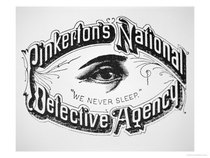 "We never sleep?!" Hey, that's my motto These works, demonstrating the emerging professionalism of detectives (or inspectors), clearly were influenced by larger nineteenth-century trends--most notably the ongoing reform efforts (which called for systematic, often covert, investigations into the corrupted and abusive practices found in factories, prisons, schools, hospitals, etc). Something else accompanied that change. As an investigator, the nineteenth-century detective was trying to systematically solve problems, using science to find solutions to the puzzles that plagued society. The "new" detectives were adopting a scientific, logical quality to the process of capturing criminals. The first known (and organized) private detective agency emerged in France in 1833. This occurred under the auspices of Eugène François Vidocq, a soldier turned privateer, who lived much of his early life on the run from from the law. (Apparently, Victor Hugo was so impressed with Vidocq that he based not one, but two, of his most important characters in Les Miserables--both Jean Valjean and Inspector Javert--on the man). Officially, however, at least in the U.S., Allen Pinkerton, a transplant from Glasgow, Scotland became Chicago's first detective in 1849. Soon after, he set up his famous Pinkerton National Detective Agency in the 1850s. Ultimately, this professionalization of the detective--with its' new emphasis on applying science, logic and technology to catching criminals--gradually reshaped the image of the investigator from "thief taker" to puzzle solver. These trends seem to have substantially influenced at least the first few generations of literary detectives, maybe more. Enter Sherlock, Poirot and all those who rely on "their little grey cells" to solve mysteries... (I do think the recent trend of paranormal crime solvers indicates the inevitable backlash, however, but that's another story). What do you think? I can't be the only one who's stared at "Dogs Playing Poker" wondering what the artist was thinking (or drinking, smoking, etc.) when he dreamed up this crazy, but fun, image. 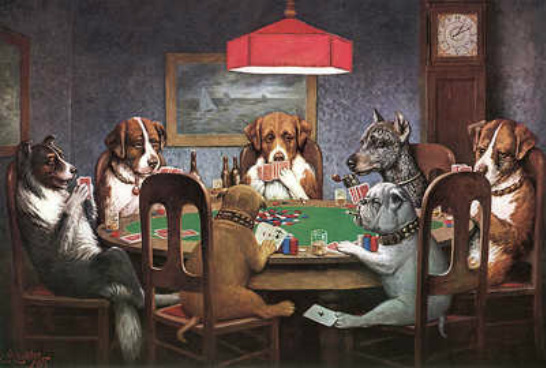 Exhibit A: "A Friend in Need" (part of "Dogs Playing Poker" series) Who doesn't love the bulldog passing his friend the ace? Pure unadulterated American kitch! Or is it???! I will call this painting Exhibit A. I ask you now to consider Exhibit B, below. 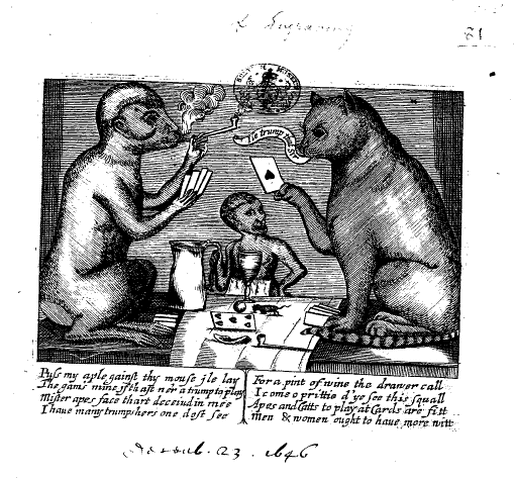 Exhibit B: Apes and cat playing poker (well, cards--there was no poker yet) Exhibit B was created by Anonymous in London 1646. Now, compare the two pieces carefully. Some differences...monkeys and cats, not dogs. A trumping card game, not poker. Some odd verse under the second one. But otherwise, Exhibit A and B are exactly the same, right? Both feature animals smoking, drinking, and, well, playing cards. An ace is prominent in both. Clearly, Coolidge's twentieth century collection was inspired by the seventeenth-century piece. No, I kid! When I came across Anonymous' (1646) woodcut, I was just struck by the superficial similarities to the more famous paintings. Actually, as you might surmise, since these two pieces had entirely different purposes and images, that it's rather silly to compare them. But I will anyway... As the story goes, C.M. Coolidge was commissioned by an advertising firm, Browne and Bigelow, in 1903 to create the iconic series of oil paintings, collectively called "Dogs Playing Poker." The purpose was to sell cigars. (In Exhibit A, after the viewer takes in the ace, his or her eye will also be drawn to the smoking pipe just behind it). On the other hand, the Thomason Tracts catalog says the woodcut in Exhibit B is "An engraving representing a monkey and a cat playing at cards; with descriptive verses denouncing card-playing." The text underneath the image reads: "Puss my aple gainst thy mouse Ile lay The gam's mine ifth aft n'er a trump to play. Mister apes face tart deceived in mee I have many trumpsters one dost see. For a pint of wine the drawer call I come o prittie d'ye see this squall Apes and catts to play at cards are fitt Men and women ought to have more witt." Huh? Basically, Anonymous was taking a good Puritan stance against card playing; after all, Cromwell's Parliament had banned all gambling and gaming by the mid-seventeenth century. And nothing depicts moral decay and mental decline more readily than apes and a cat playing cards. So maybe the two pieces had different--okay, completely opposite--messages. Or-r-r-r, maybe we've hit on the secret seventeenth-century Puritanical origins of "Dogs Playing Poker." What do you think? You tell me! 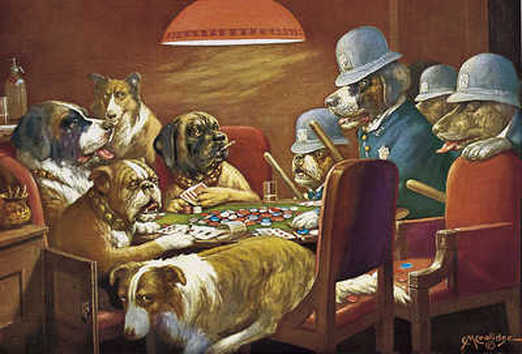 (And just because these are so much fun, I'll leave you with "Pinched with Four Aces" to ponder. Discuss amongst yourselves!) 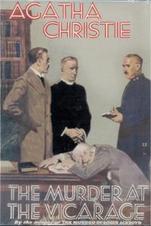 original 1930 UK edition Recently I've been thinking about the history of female sleuths--at least of the literary variety. I'd assumed that the first had emerged in the "Golden Age of Detective Fiction" (the period between World War I and World War II, when many great fictional detectives emerged). Certainly, two early female sleuths were gentle Miss Marple and the intrepid girl detective Nancy Drew, although neither was the first female detective. Miss Marple first emerged in one of Agatha Christie's short stories ("The Tuesday Club Murders") in 1925, although she was not featured in a full-length novel until The Murder at the Vicarage was published in 1930 (Check out the original cover above. Anyone missing? Hmm...). 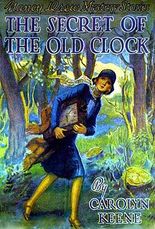 the chic 1930s detective Interestingly, the first Nancy Drew mystery (The Secret of the Old Clock) was also published in 1930. (The authorship has been much contested, and the stories have been much revised, but the pseudonym "Carolyn Keene" is understood now to be the creation of Edward Stratemeyer and a series of ghostwriters, including Mildred Wirt). In many ways, Nancy Drew and Miss Marple could not be more different. Miss Marple elicited friendships over tea, making sense of gossip, while Nancy listened at keyholes, regularly finding herself captured or bopped over the head. Miss Marple was a lively middle-aged "spinster" who demonstrated wit and wisdom, while Nancy was a titian-haired teenager, later college student, who was highly skilled at everything. Yet, arguably, both sleuths were products of the Great War. Miss Marple had lost her fiance and chose to make her own way in the world. Nancy had benefited from the nascent women's rights movement in the U.S, believing without reservation that she could do anything that men could do, including catch criminals. 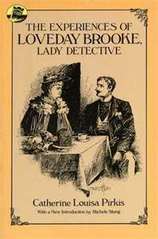 Loveday Brooke at work With a little more digging, however, I found that the Victorians had actually produced the first female detectives. In 1864, Andrew J. Forrester Jr. introduced Mrs. G. in the Female Detective, and other female sleuths followed soon after. These women seem to have represented a different type of reformer--rather than those who sought to reform prisons, factories and mills, and schools, these female detectives seemed to be suggesting a reform of the police force. The first female sleuth I could find that had been created by a female author was Loveday Brooke, in Catherine Louisa Perkis' The Experiences of Loveday Brooke, Lady Detective (1893). Loveday Brooke, destitute at 30 years old, had defied patriarchal convention to join a detective agency. Much like her better known contemporary, Sherlock Holmes, Loveday relied on her intellect and logical thinking to suss out her criminal adversaries. She offered a counterpoint to the widespread belief in the late nineteenth-century that women were emotional, hysterical, and incapable of logical reasoning. In many ways, these sleuths seem to reflect something of their times. It makes me wonder, first, how my own amateur sleuth, Lucy Campion, might be a product of my experience? It also makes me wonder generally about more recent trends of female sleuths who have (more-or-less successful) crafts, businesses, and hobbies on the side, which inform their crime-solving capabilities. Just curious: Do you think characters (sleuths or not) are still products of an author's time? And if you don't like that question: What sleuths or detectives (female or male!) do you enjoy? Why? |
Susanna CalkinsHistorian. Mystery writer. Researcher. Teacher. Occasional blogger. Categories
All
Archives
May 2023
|
 RSS Feed
RSS Feed